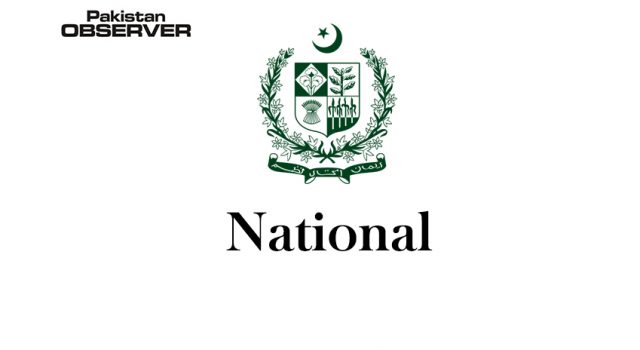Salahuddin Haider
GOOD question, but looks highly unlikely, atleast for the present. The reason is not too difficult to understand. Indian obduracy stems not from Nirender Modi’s attitude alone. Perhaps, he, too, may be thinking of breaking the ice, opt for a new and healthier relationship, but his allies, the Shiv Sena, several other extremists group with whose support he rode to second term victory earlier this year, do not wish him to be soft on Pakistan.
Hard line is one thing, can be overcome or sidelined with little efforts, but hostile mentality, that too when it is illogical, and devoid of wisdom, is often than not far more hurting and dangerous in charcter, or perhaps tantamounts to killing instinct. The answer lies in Modi liberating himself from their clutches, but the vital question is can he really do that? Starting from former Maharashtra chief minister Bal Thakeray, to today’s vehement elements, Indian history has sunk deep into abyss recovery from where looks virtually impossible. But again where there is will, there is hope, and that factor alone is much more important, than all others combined together.
No point in relying on historical background, too well known to recount here. Simla sour the Agra Summit, Atal Bihari Vajpayee’s bus journey to Lahore, his inscription on Minare Pakistan of his visit being a “defining moment” have all been done and dusted now. Delhi’s South Block, headquarter of Indian foreign ministry, governed by wiser elements, for considerable period, changed colours when fell in the lap of Sushma Swaraj, known for her anti-Pakistan approach. That seems to persist till date. Attempt made by Islamabad bosses to rectify the situation, was instantly rejected, without any rhyme or reason.
In conditions such as these, disappointments begin to vitiate the atmoshphere which it did, whenever occasion arose. Yet hope should never be lost sight of, and that is what Pakistan has been relying upon. Credit here is overdue to army chief, General Qamar Bajwa who instantly and unhesitatingly heeded to former Indian cricketer Naujot Singh Siddhu’s request to open Kartarpur corridor for his Sikh community’s visit to their shrines, called Gurdwara Punja Saheb in Hasan Abdal. If not more, It surely as precious as Amritsar’s Golden Temple, which late Indira Gandhi tried to demolish, and paid the penalty with life. In keeping with the words of his army chief, Prime Minister Imran Khan announced opening of Kartarpur corridor for Sikh pilgrims to be at their place of worship in November on the auspicious occasion of the Guru Nanak’s 550th birth anniversary. Pakistan does not suffer from any complex or misapprehensions.
It has opened its heart out on numerous occasions, but Indians unfortunately banned cultural and sports exchanges for reasons best known to them. A milder ray of hope has now rekindled with the permission given to Indian Davis Cup team to fulfill its international commitment in Pakistan. Expectations had risen high of Modi’s presence on Kartarpur opening ceremony, but the dream remained unrealized. Sheer waste of time to speak of Indian electronic media’s whimsical approach, illogically hostile principally because newer generation draws pleasure in fanaticism, but among politicians perhaps the lone voice of sanity is of Mani Shankar Aaiyer.
He is luckily backed by old timers controlling major newspapers like Times of India and Hindustan Times as editors,who too stand for revival of friendship and peaceful times in sub-continent. Trade figures, official or unofficial, fully back their solid arguments, words of wisdom. The main items India imports are fresh fruits, cement, petroleum products, bulk minerals and ores and finished leather. The major exports to Pakistan include raw cotton, cotton yarn, chemicals, plastics, man-made yarn and dyes. Onions and tomatoes too have their own place and naturally will help in rebuilding mutually beneficial relationship.
India has been left clueless now. It used to shelter itself behind argument that hard-liner Pakistan army, being the main obstacle and fanning terrorism that counter-balances attempts at revival of friendlier ties between the two principal Asian neighbours. But now the world is witness to same army, accused of being the opponent of good ties with India, stands shoulder to shoulder to elected civilian government of Imran Khan. General Bajwa, along with his two principal officers ISI chief, Lt-Gen Faiz Hamid, and ISPR chief Maj-Gen Asif Ghafoor was in America, received tremendous welcome at Pentagon, and had open discussions on regional peace, defence cooperation, and enabling the civilian administration to play its role in bridging the gap. That argument too has fallen flat in its face. China welcomed peace efforts in Washington, and even suggested to Delhi to respond positively. Where is the tumbling bloc now? In the mindset of extremist Indians, then Modi’s role assumes special importance. He has to prove himself a leader in real sense of the word. Cricket teams of the two countries are itching to play in each other’s country to promote cricket, but wisdom has to dawn. That is the pre-condition for peace dream to realize.









